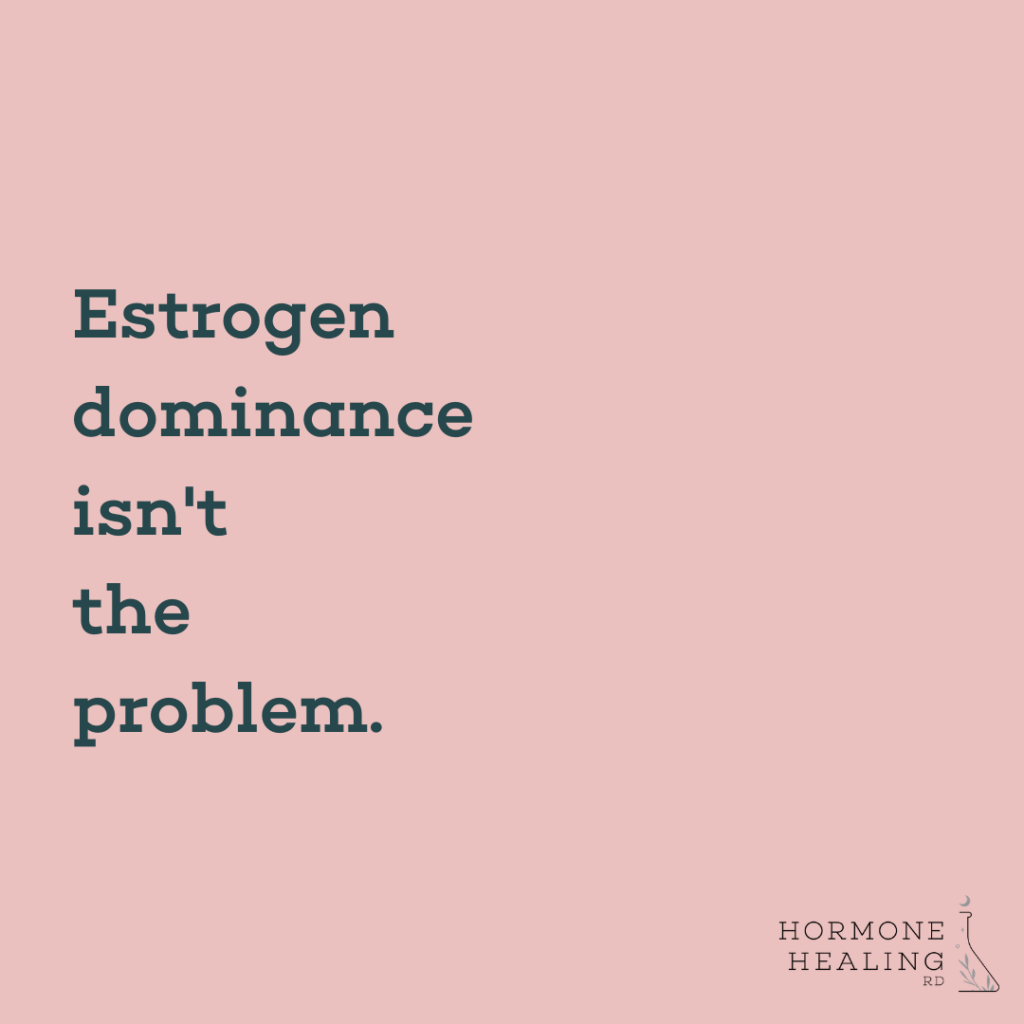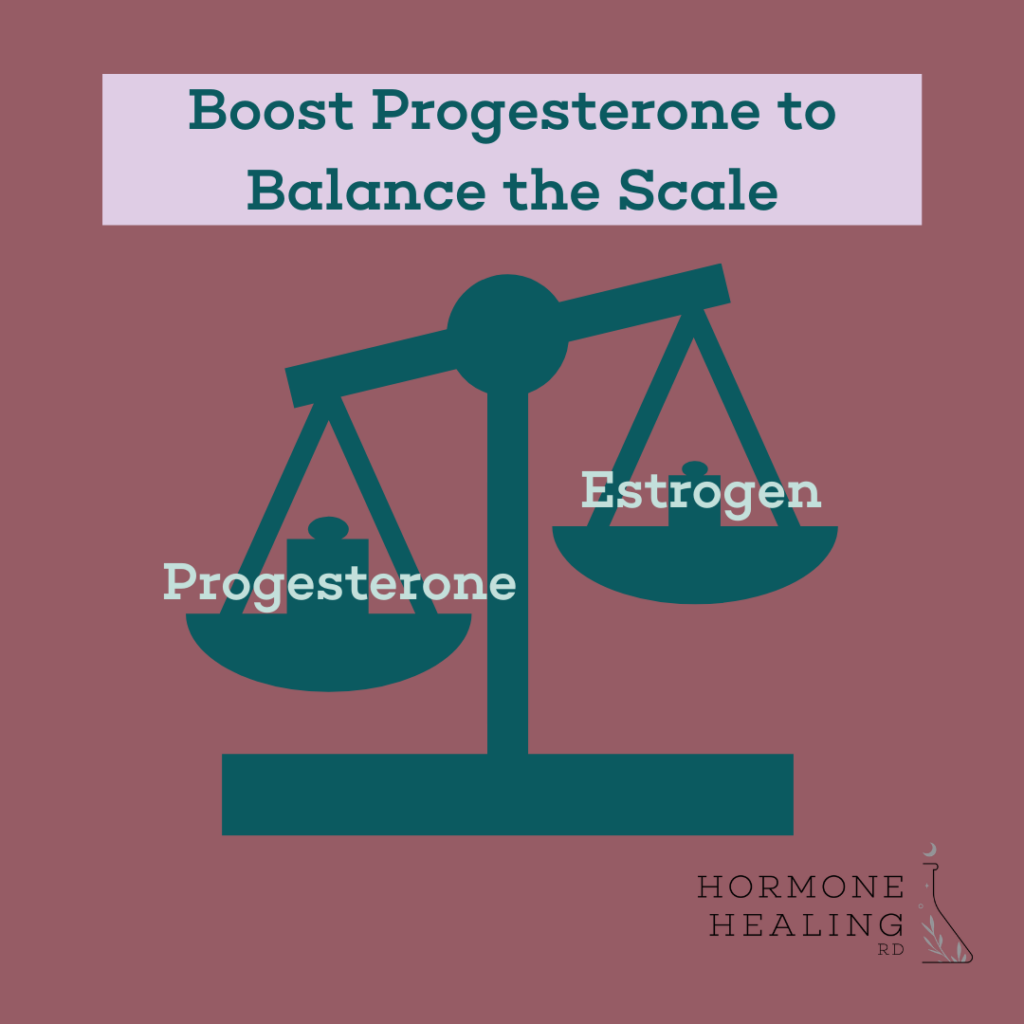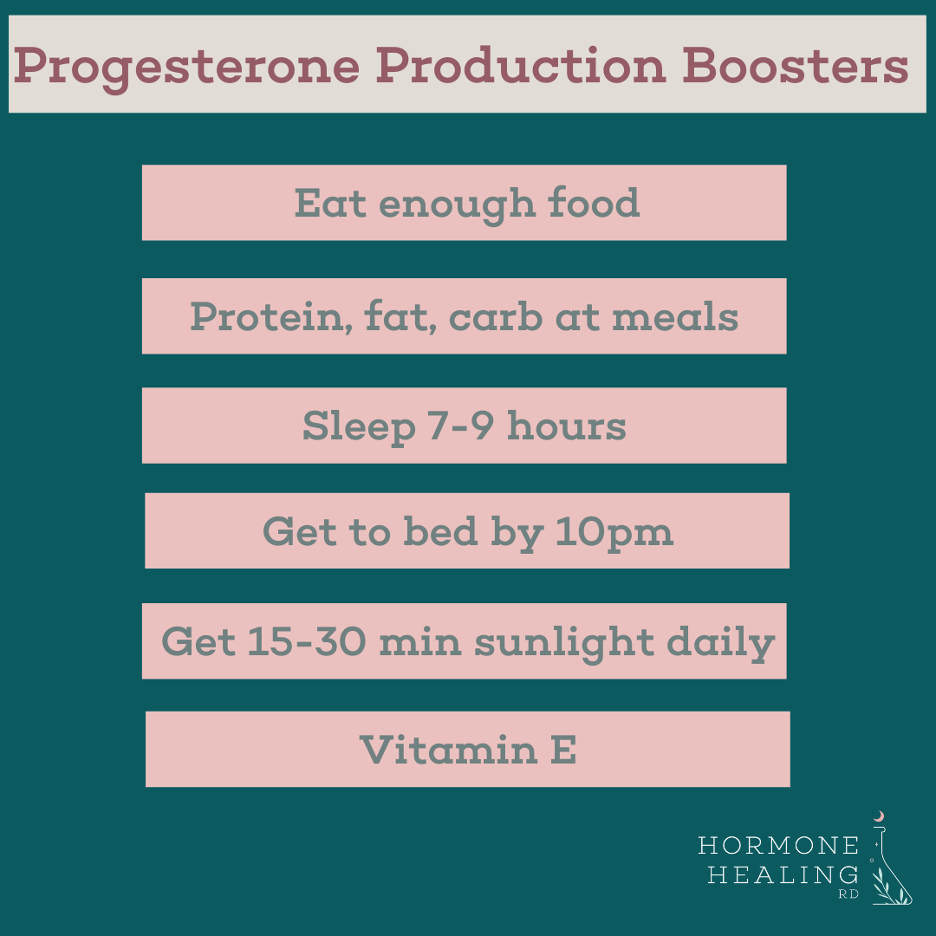You’ve probably read a post or heard someone describing symptoms of excess estrogen and resonated with it. I know I have. However, high estrogen isn’t the main problem. Can reducing estrogen in your environment, beauty products, menstrual products, and home help your symptoms? Yes and I think it’s a piece of the hormone imbalance puzzle, but it’s not the whole picture. Essentially, estrogen dominance is having too much estrogen. Your excess estrogen may be due to your lack of progesterone.

What role does progesterone play in estrogen dominance?
Progesterone acts like the complete opposite of estrogen in the body. It’s very pro-metabolic. Progesterone supports a healthy metabolism and thyroid function, while estrogen can slow down thyroid function when too high, leading to fat storage, acne, mood changes, headaches, migraines, and everything we want to avoid. As estrogen levels rise, progesterone levels are lowered. We only make progesterone when we ovulate, but it is dictated by thyroid function and is suppressed if we have excess estrogen.
Lack of progesterone leads to a sluggish thyroid/metabolism, which is a problem. Low progesterone contributes to abnormal menstrual cycles and impaired fertility. When progesterone is low, estrogen is excessively high, leading to decreased sex drive, fatigue, weight gain, PMS, gallbladder problems, or fibrocystic breasts. The key to healthy hormones and better periods is to focus more on raising progesterone levels and nourishing your body rather than trying to lower estrogen by restricting things. Let’s not forget about stress. The more stressed you become, the more cortisol is produced. This increase in cortisol causes the depletion of progesterone.

What helps us make more progesterone?
Before you make a plan to increase your progesterone, you should first ask yourself a few questions. What is inhibiting me from making progesterone? Am I eating enough? Do I have a dysfunctional thyroid or metabolism? Am I missing essential amino acids? So, here’s what you can do to help boost your progesterone production:
How nutrition impacts progesterone?
I often hear from clients that they’ve been on restricting diets trying to lose weight. These diets usually involve not eating enough, or not eating well-balanced meals, or eliminating carbs; all of which takes a toll on progesterone levels. Although there’s no such thing as progesterone-rich foods; there are habits that we can apply to support thyroid and progesterone production.

If you’re struggling with weight gain, mood swings, and low libido, then you could be experiencing estrogen dominance. You can try to detox your estrogen levels as much as you want, but without adequate progesterone, you will still have period problems. To correct this hormone imbalance your goal should be to boost your progesterone. For more information on estrogen dominance, check out my Instagram IGTV video for more information on estrogen dominance. Want to get to the bottom of your symptoms and improve your hormone health for good? Join my Master Your Minerals course, in which you’ll learn how to interpret your own HTMA and build a hormone-healing protocol based on your unique results.
Photo by Anh Nguyen on Unsplash
